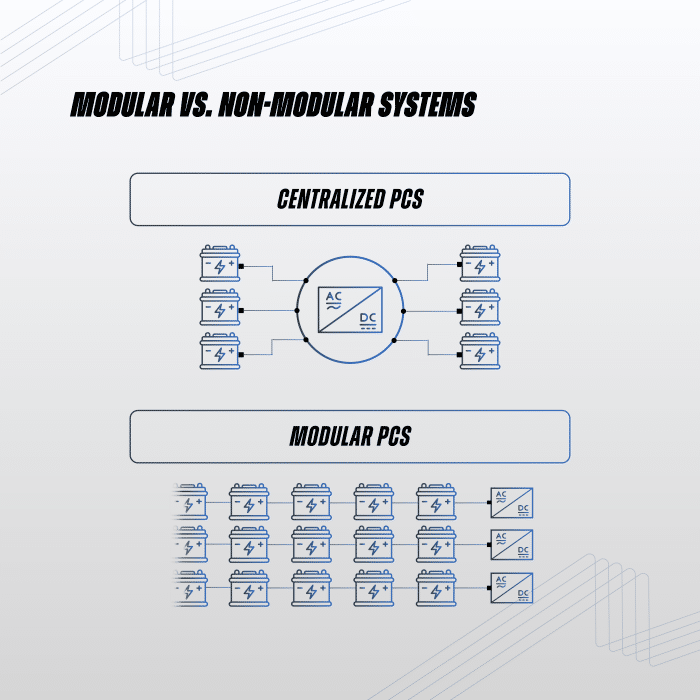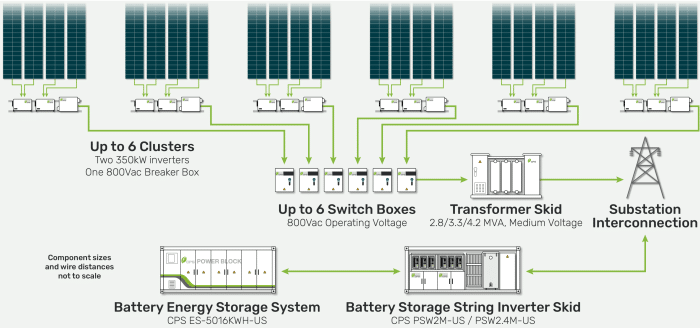Exploring the demand for utility-scale energy storage | Dispatches from the Energy Transition

Utility-scale energy storage systems have become increasingly popular in the last several years. The most recent episode of “Dispatches from the Energy Transition,” a webinar series hosted by Mayfield Renewables and Outfit, focused on the rising demand of large-scale battery energy storage systems (BESS).
Titled “The Surge in Demand for Utility-Scale Energy Storage,” Episode 4 of the webinar series explores the important role that energy storage is playing in the overall energy transition amid growing energy demand. The episode highlights common utility-scale system architectures, design trends and balance of system (BOS) considerations.
Watch the full webinar right here:
Dispatches From the Energy Transition is hosted by Robert Cross, principal at Outfit, a clean tech marketing agency, and Lucas Miller, senior engineering consultant at Mayfield Renewables, which provides third-party engineering services for C&I, small utility-scale and microgrid projects, as well as some education services for the solar + storage industry.
The guest speakers for the webinar were:
- Drew Lebowitz, principal and managing director at PowerSwitch, an energy storage advisory firm based in Portland, Oregon, specializing in finance and conceptual design stages of utility-scale storage projects primarily in North America. He also wrote The BESS Book.
- Jordan Harrison, product strategy manager at CPS America, with a background in electrical engineering and focused on product strategy.
While CPS is more known for its PV inverter products, Harrison says the company introduced its first C&I BESS system in 2018, which was a 30 kW / 65 kWh system. However, the product line was interrupted during the COVID-19 pandemic.
“With COVID, a lot of the supply constraints, especially for the battery components, it was something put on pause to really focus in on our core business, which is that PV market,” Harrison says. “But a couple years ago, we brought back [more staff], and we have a large team and a lot of support from our global brand as well. So, we have a lot of resources to put into both markets so we’re not taking away from PV. We’re just adding a new focus on the battery and energy storage sector.”
Hear Jordan Harrison discuss battery technology:
BESS market growth
The growth of BESS in the renewable energy industry has been swift. But was it a surprise?
“I think we’ve been seeing it go up, especially after the IRA was passed to allow storage, and that was I think the big boost,” Lebowitz says. “But even by those predictions, when that actually came into law in 2023, I think things have really taken off in an amazing way. There’s been just a huge investment in projects.”
Lebowitz sees most of the growth with new products focused on the utility-scale side of the industry, but he also sees more storage products coming along for the C&I and residential space.
“The biggest surprise I’ve seen is price,” Lebowitz adds. “Prices seem to really have come down very quickly, and of course that’s just going to make deployments go up even faster.”
Harrison describes the energy storage market as an exciting sector to be doing business.
“Especially from an equipment manufacturing perspective, just seeing the innovation and cell energy density allows us to pack in huge energy density in a small footprint,” Harrison says. “We’re at 5 MWh in a 20-ft high cube container, so it’s tons of energy in a very small space.”


Harrison credits advancements in cooling technology — air-cooled vs. liquid-cooled — as one of the prevailing factors in supporting the technology improvements.
Long-duration batteries
Different battery chemistry alternatives are allowing for longer battery storage. For large-scale energy storage projects, especially for those tied to the grid, the speakers were asked about the demand for long-duration energy storage (LDES).
Hear Drew Lebowitz discuss differences in LDES systems:
Lebowitz explained that BESS systems are commonly classified in terms of duration, as in the amount of time it takes for a fully charged battery to discharge its power supply, In the early days, 2015 or 2016, batteries only had about 30 minutes of duration. But advances in lithium-ion batteries have allowed them to discharge more slowly, with what he calls a “sweet spot” of 2-4 hours duration.
“Anything beyond that, say 6-hour to 8-hour, and now we’re seeing talk of hundreds of hour duration, that is what would be called LDES,” Lebowitz says. “A lot of that is driven by markets. That’s one thing you see about storage, it’s very regulatory dependent. Unlike PV or wind, it doesn’t produce energy, so you have to have some market mechanism where you’re going to be able to make revenue one way or the other.”
Lebowitz says that the vast majority of BESS projects until now have been geared toward two- to four-hour duration systems.
“We just haven’t seen a huge demand for those longer duration markets,” Lebowitz says. “Now, are those coming? I think they are, and part of it is a function of the tech. The tech wasn’t there, so there was no market, so it’s which leads and which follows? We’re starting to see some pilot programs being done for those longer duration, but really I think time will tell. For now, two- to four-hour really is the vast majority of installs.”
More BESS Education
For the most complete source available for utility-scale battery systems, check out the BESS Book from Drew Lebowitz. Discover the fundamental principles of lithium-ion BESS technology, engineering, and finance — enriched with hands-on insights from real-world projects. Explore the latest advancements, safety protocols, policy shifts, and market trends driving the rapid growth of large battery systems globally.
Each episode of Dispatches from the Energy Transition will zoom in on the real-world application of emerging technologies and the projects they impact — in a level of detail only Mayfield can provide.





Comments are closed here.